Heinrich Schliemann (1822–1890) and the DAI Athens
Heinrich Schliemann, whose two-hundredth birthday was celebrated earlier this year (* Jan. 6, 1822; † Dec. 26, 1890), was important to the German Archeological Institute in a particular way.
When the Department in Athens was founded in 1874, it originally had no premises of its own. Instead, it operated out of a rented building on Akadimias Street. The first three directors left this arrangement unchanged: they were far too busy with the basic task of establishing the Institute in Athens, setting up its library, holding meetings (e.g. for talks), giving tours in the city, and (of course) pursuing research and publishing it in the Institute’s new journal: Mitteilungen des Kaiserlichen Deutschen Archäologischen Instituts, Abteilung Athen. Schliemann, who already lived and worked in Athens for some decades, was elected a corresponding member of the Institute in 1877 and became an ordinary member in 1885. He was in regular contact with the associates of the Athens Department, as attested by numerous letters and invitations that are preserved today in the Schliemann Archive of the Gennadius Library of the ASCSA at Athens. Since Schliemann delivered several talks about his excavations (fig. 1) at the Institute between 1881 and 1889, he had firsthand knowledge of its local conditions.
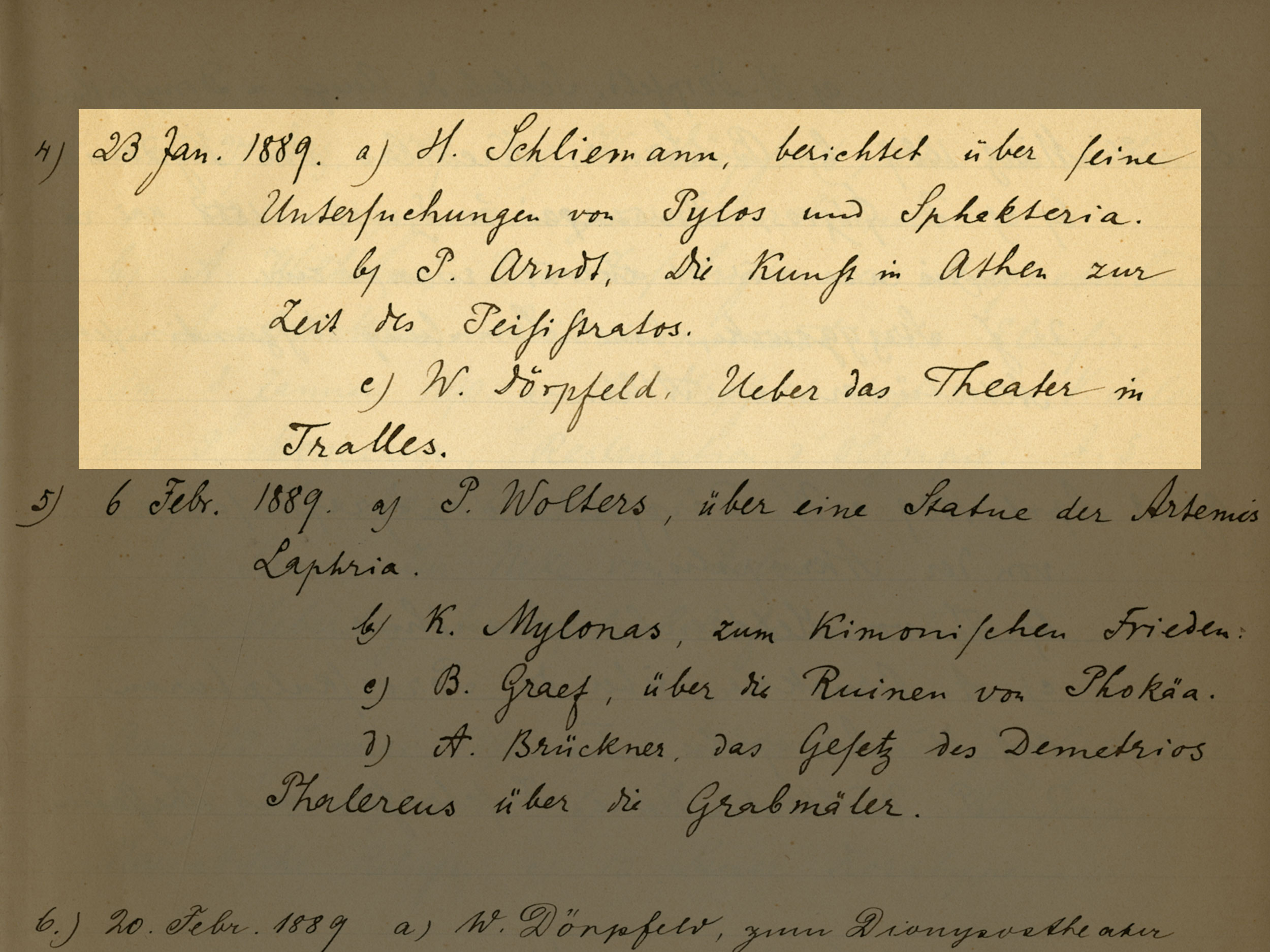
Dörpfeld and Schliemann
Schliemann’s relationship with the Institute changed with the appointment of Wilhelm Dörpfeld (1853–1940). Initially elected Second Secretary in 1886, Dörpfeld became First Secretary of the Athens Department a year later. Schliemann and Dörpfeld had known each other by then for many years (Kennell 2008, Kennell 2010). They had met – at the latest – in 1879, in the ‘German colony’ in Athens. Dörpfeld, who was significantly younger, had already made a name for himself in the field. He had come to Olympia in 1877 as the assistant of the excavation architect; in 1878, he was appointed as the technical director of the excavation. In 1881, Dörpfeld and his colleagues sketched the famous sculptured stone ceiling found in the tholos tomb of Orchomenos (the so-called Treasury of Minyas) on Schliemann’s behalf, and in 1881/1882 Schliemann recruited Dörpfeld as the architect for his excavation in Troy and then again in 1884/1885 for the excavation in Tiryns. Dörpfeld could work no longer for Schliemann after he became Secretary of the Athens Department.
Schliemann and the building of the DAI Athens
However, he did use his friendship with Heinrich Schliemann to the Institute’s great advantage, a personal connection from which it has benefited to the present day: Schliemann proposed to the German government to erect, at his own expense, a building for the Institute on a plot of land that he owned near the center of Athens if the German state agreed to a twenty-five-year rental contract. The state accepted Schliemann’s offer (fig. 2), and so he had the building erected in just one year, according to a design by the architect Ernst Ziller, with modifications by Dörpfeld, who was an architect himself (fig. 3).
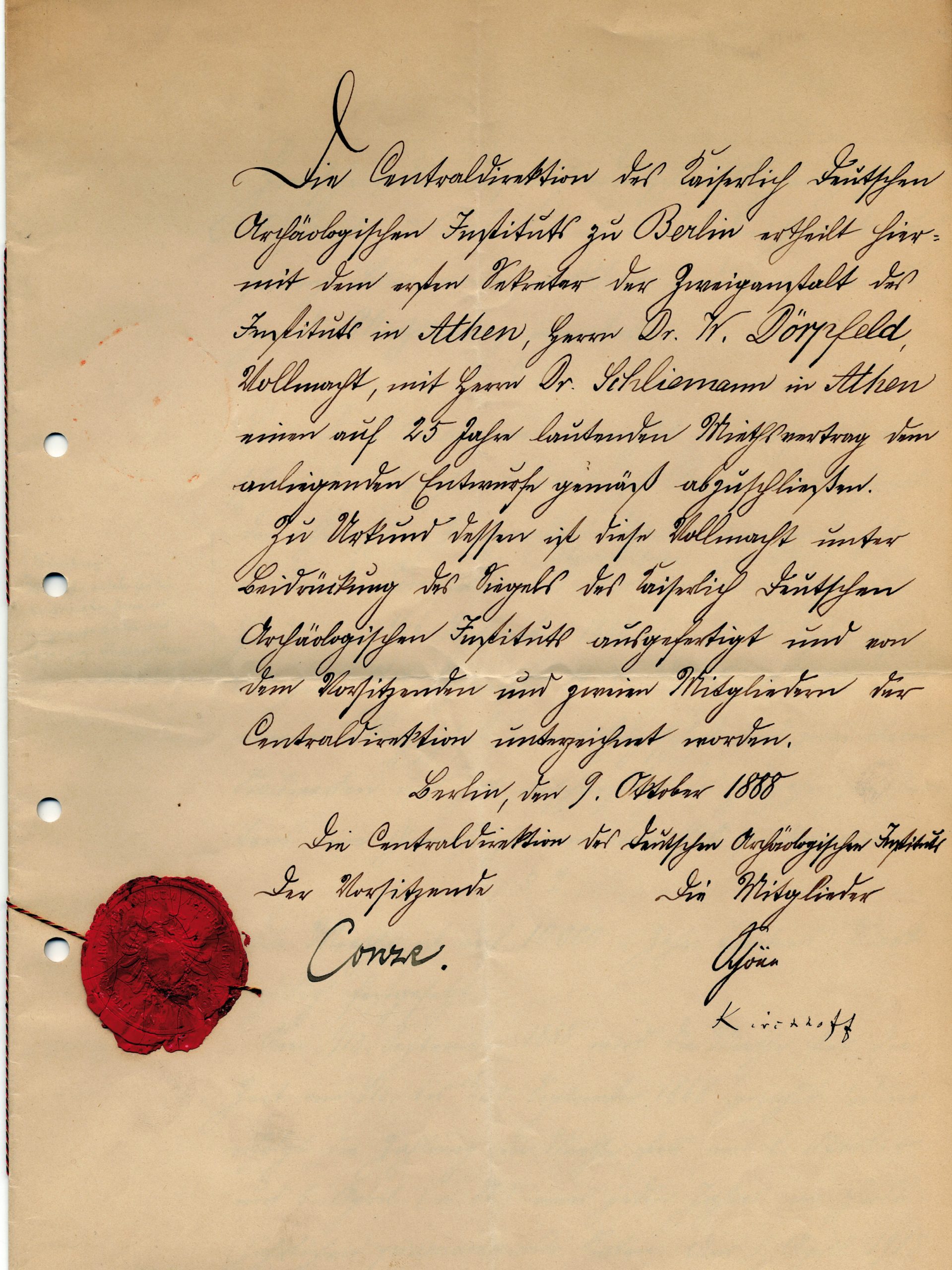
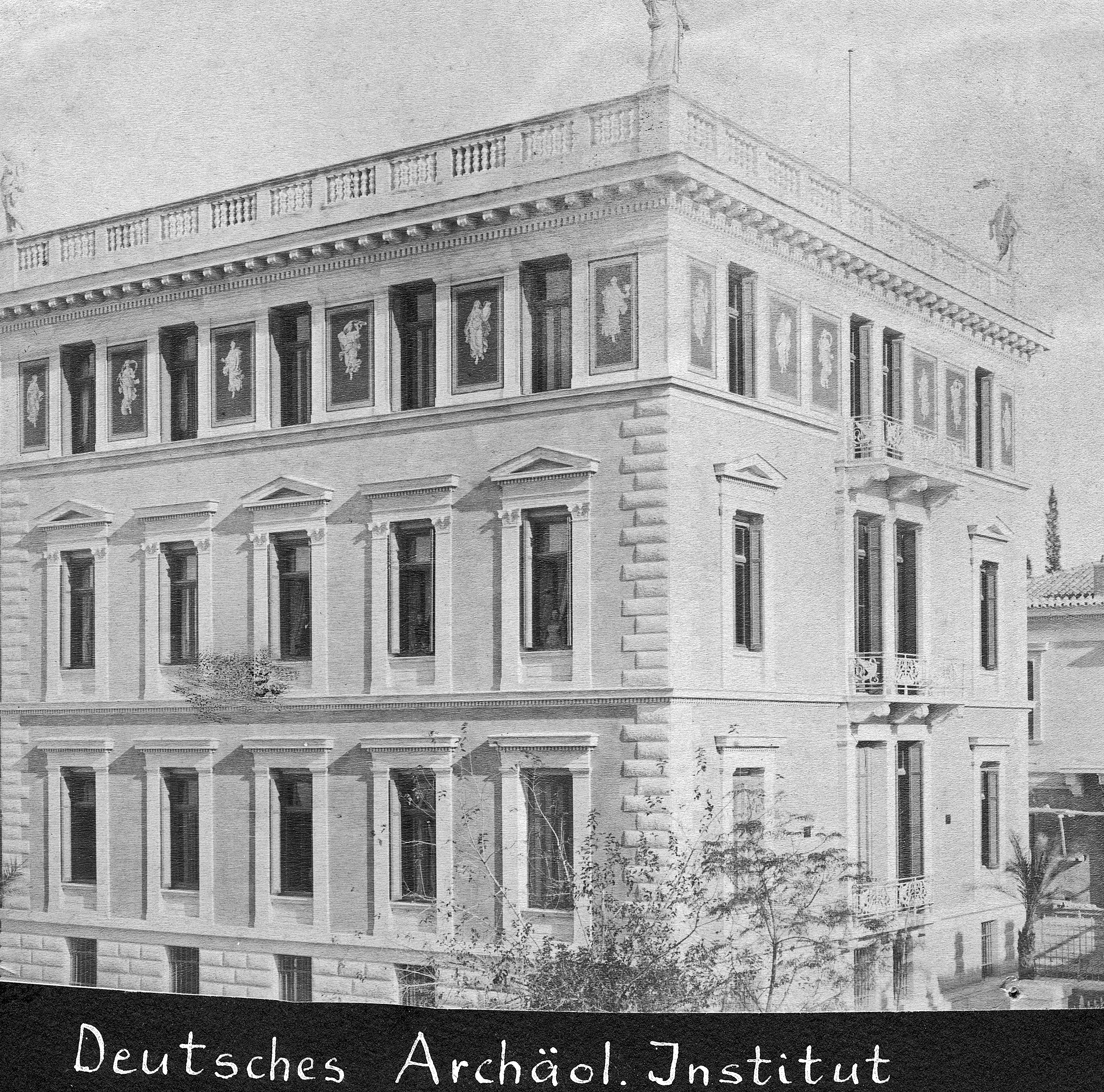
Schliemann personally oversaw numerous details of the construction. For example, being a polyglot, Schliemann meticulously selected the Greek quotations that adorn the Institute today. Moreover, the archive of the DAI Athens still holds a calling card of Schliemann’s, on which he asked the eminent Greek philologist Athanasios Roussopoulos what he should inscribe on the foundation stone of the building. The latter replied on the same card, on August 12, 1887 (fig. 4):
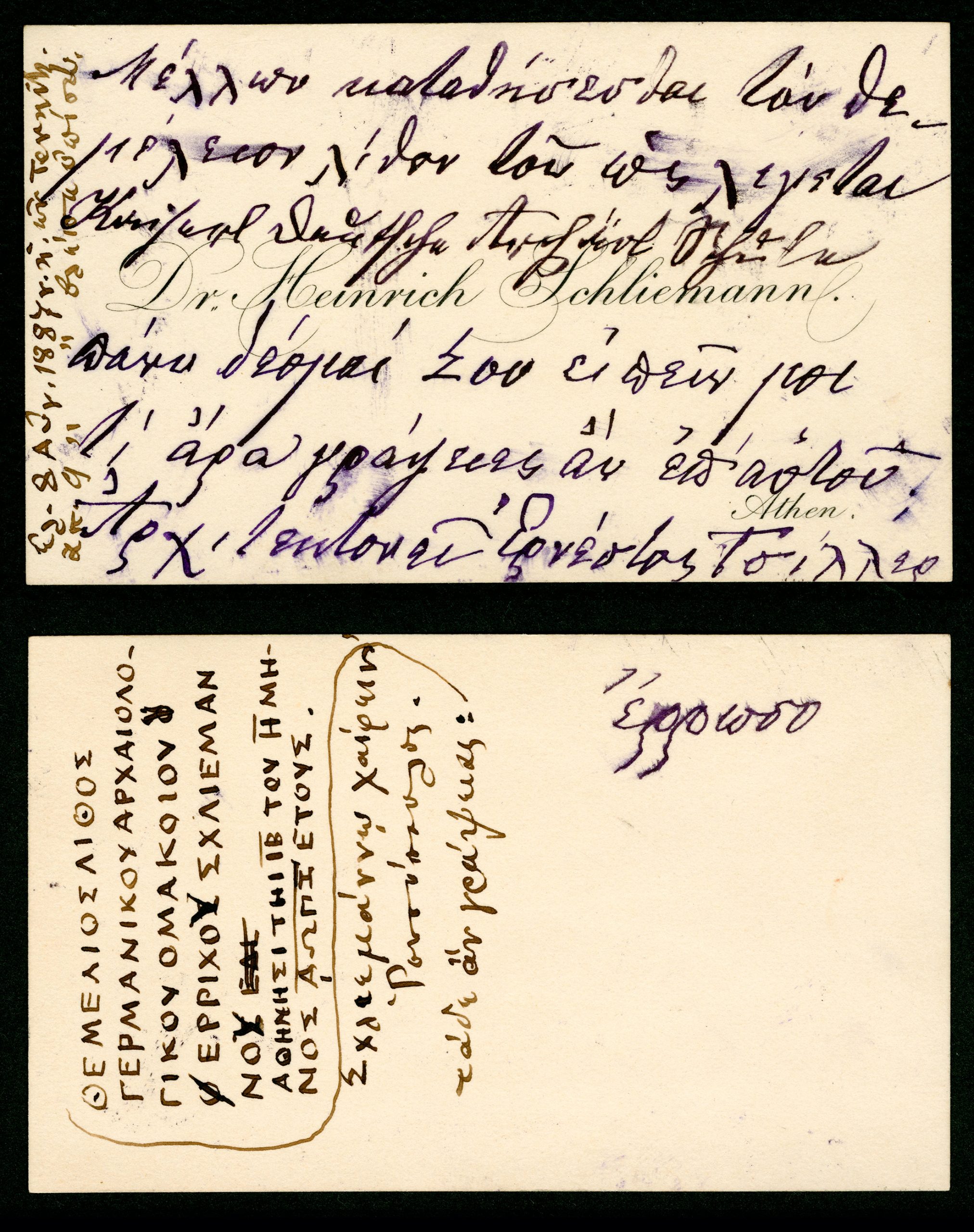
ΘΕΜΕΛΙΟΣ ΛΙΘΟΣ ΓΕΡΜΑΝΙΚΟΥ ΑΡΧΑΙΟΛΟΓΙΚΟΥ ΟΜΑΚΟΙΟΥ
ΕΡΡΙΧΟΥ ΣΧΛΙΕΜΑΝΝΟΥ
ΑΘΗΝΗΣΙ ΤΗΙ ΙΒ ΤΟΥ Η ΜΗΝΟΣ ΑΩΠΙ ΕΤΟΥΣ
(Foundation stone of the German Archeological Institute, by Heinrich Schliemann Athens, August 12, 1887)
Today, it is unfortunately impossible to determine whether this inscription was then duly inscribed: the location of the foundation stone is not known.
Schliemann also took on himself the task of selecting the Greek sayings that now appear on the walls of the ground floor and first floor of the building (fig. 5). He wrote to his childhood friend Wilhelm Rust about it on June 10, 1888 (Meyer 1936, 280–81, no. 194):
“I am still busy with the building work; the Imperial German Archeological Institute will be finished around July 15th. It looks magnificent with its pictures of the Muses on the exterior walls and its statues on the terrace. The matching inscriptions that I selected from the Greek classics on the walls of all the rooms have something especially dignified about them and will fill many generations of scholars with awe […]”

Schliemann and Dörpfeld after the erection of the building
Schliemann and Dörpfeld remained fast friends until Schliemann’s death. It was therefore Dörpfeld himself who oversaw the transport of the last pieces of the Schliemann collection in Piraeus to the museums of Berlin after Schliemann’s sudden death (fig. 6).
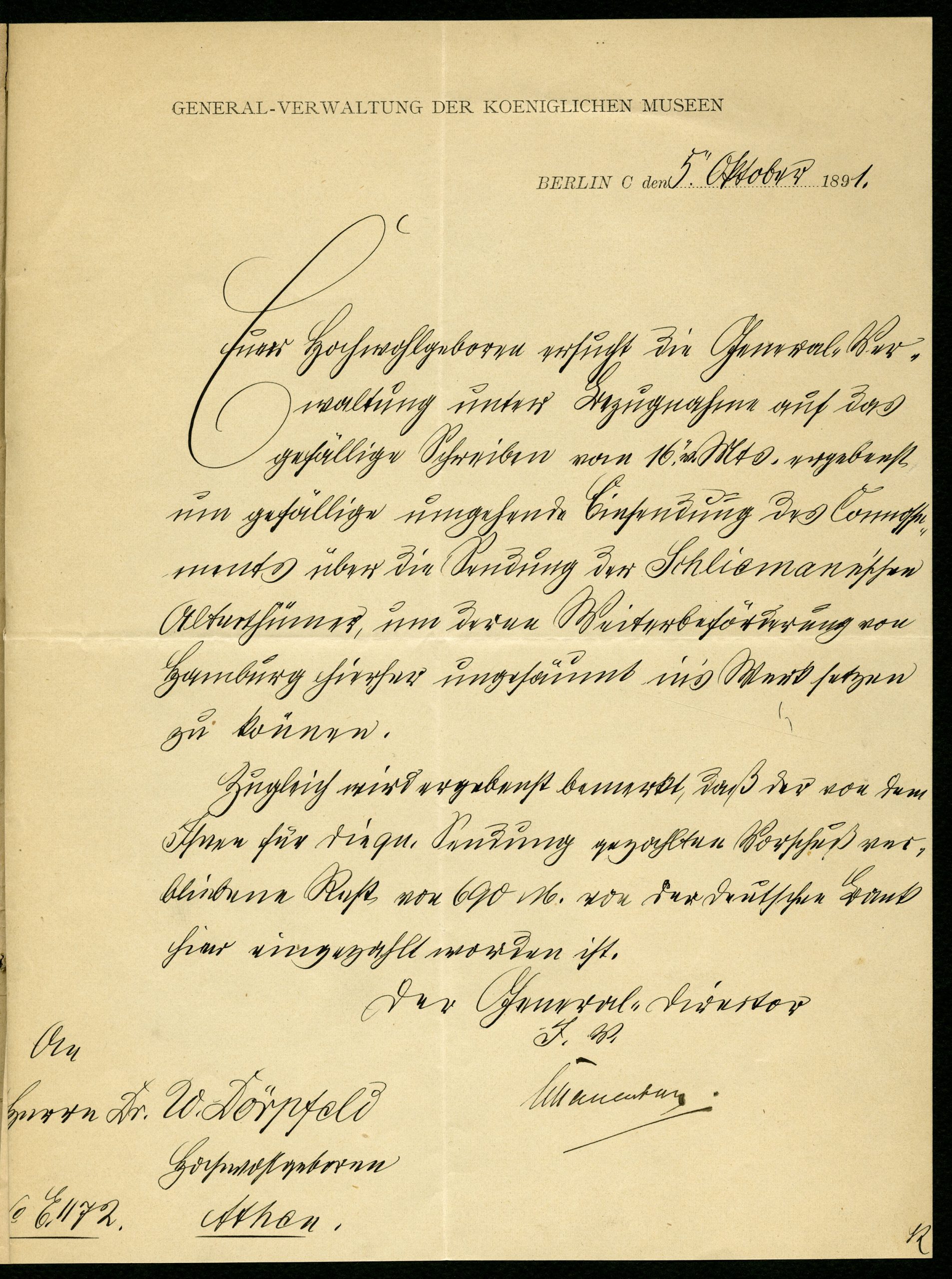
Over the course of a later distribution of archeological doublets, some of Schliemann’s Trojan finds reached the collection of the DAI Athens from Berlin (fig. 7). This collection is currently the subject of the BMBF – Bundesministerium für Bildung und Forschung – project “Shapes of Ancient Greece: Digitizing the Collection of Antiquities at the DAI Athens” (https://www.dainst.org/projekt/-/project-display/4712484).
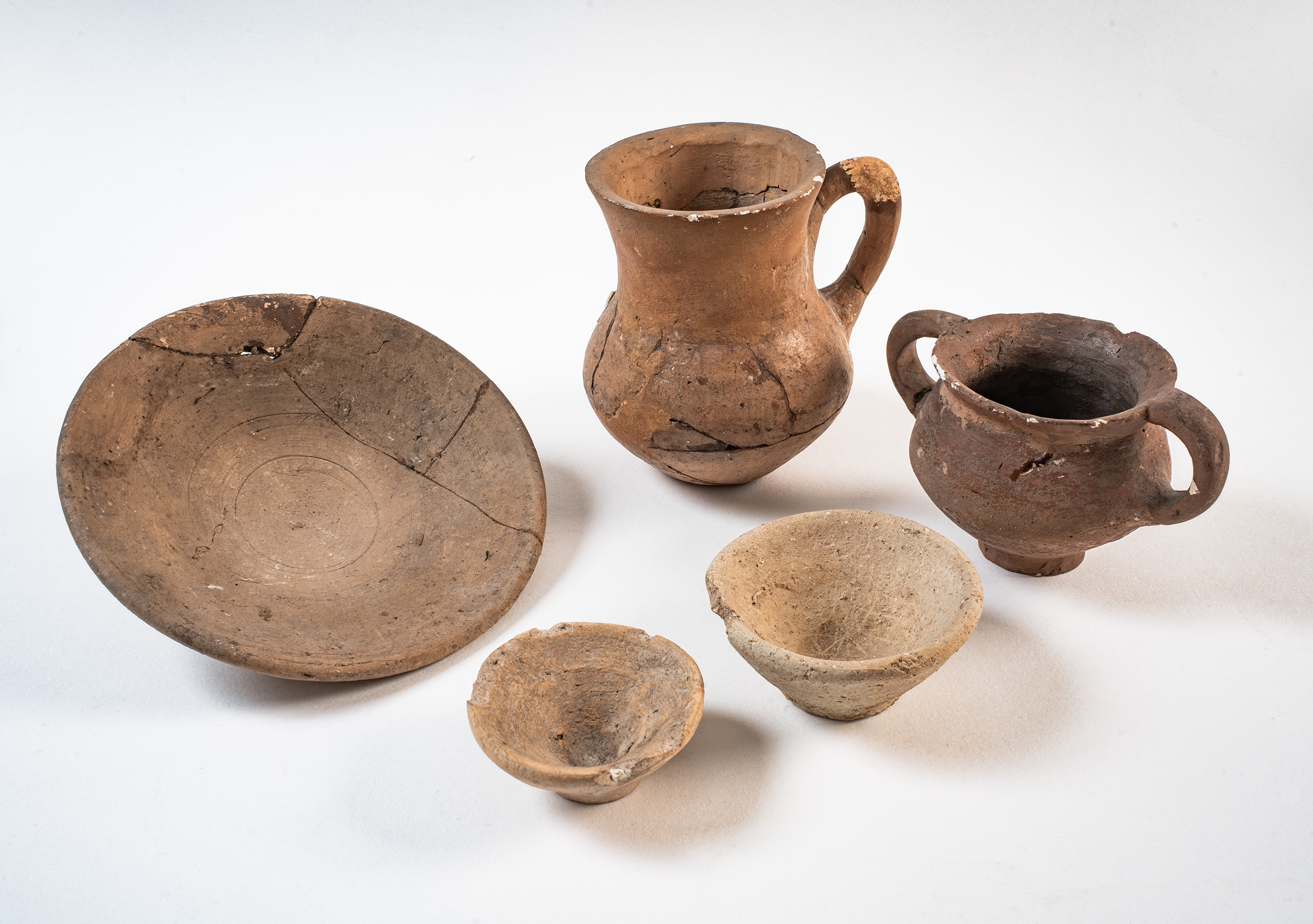
The Athens Department also holds another heirloom from Schliemann: the original glass plates used to document finds at Schliemann’s excavation of Mycenae in 1876, on which the publication illustrations (e.g. Schliemann 1878) were based. They were brought to the DAI Athens after Schliemann’s death and are now the oldest items in the photographic library (iDAI.objects) (Abb. 8).
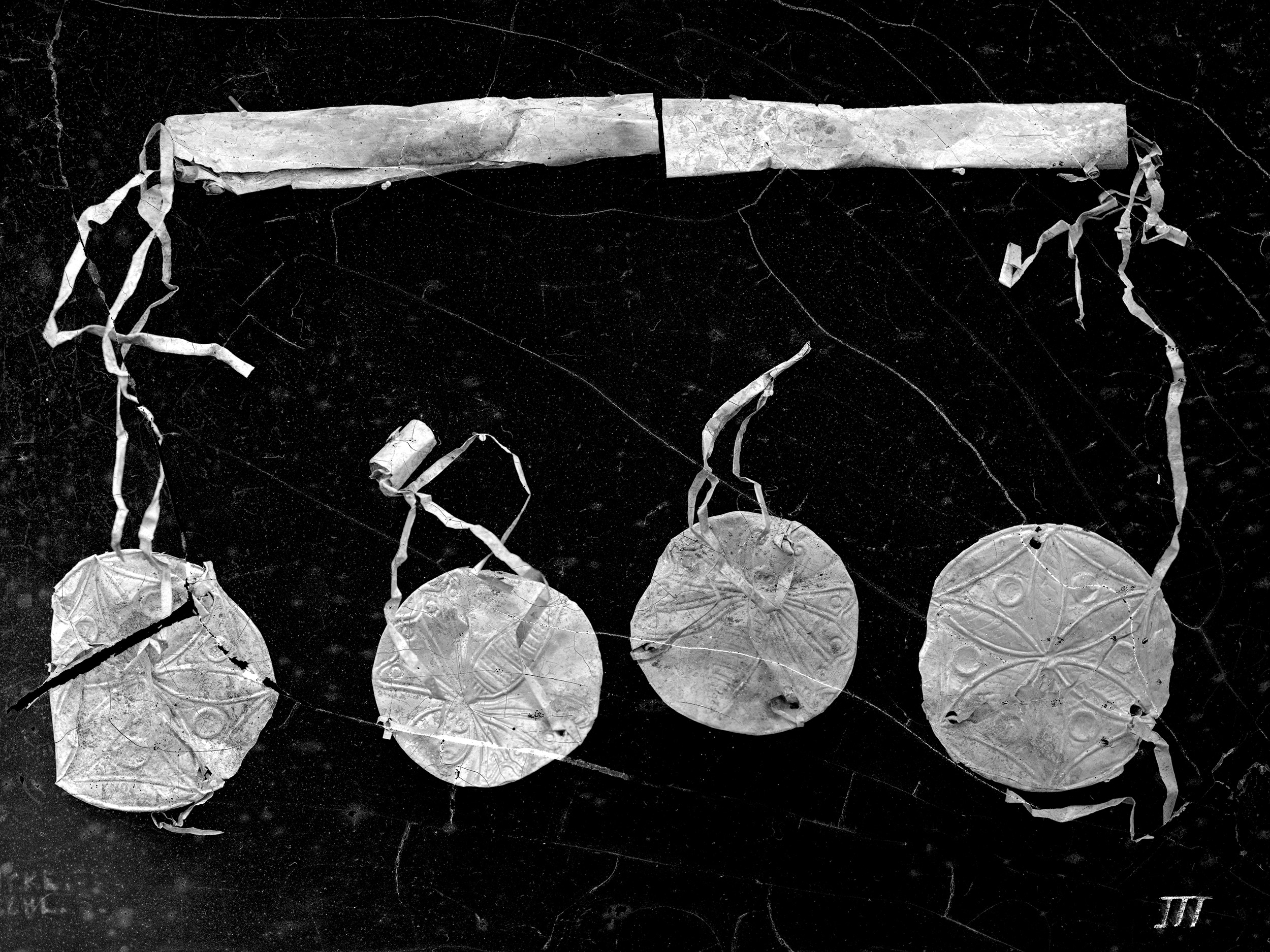
The Athens Department still keeps the memory of Schliemann alive today: Schliemann’s bust greets every visitor in the foyer outside the main library hall (fig. 9).
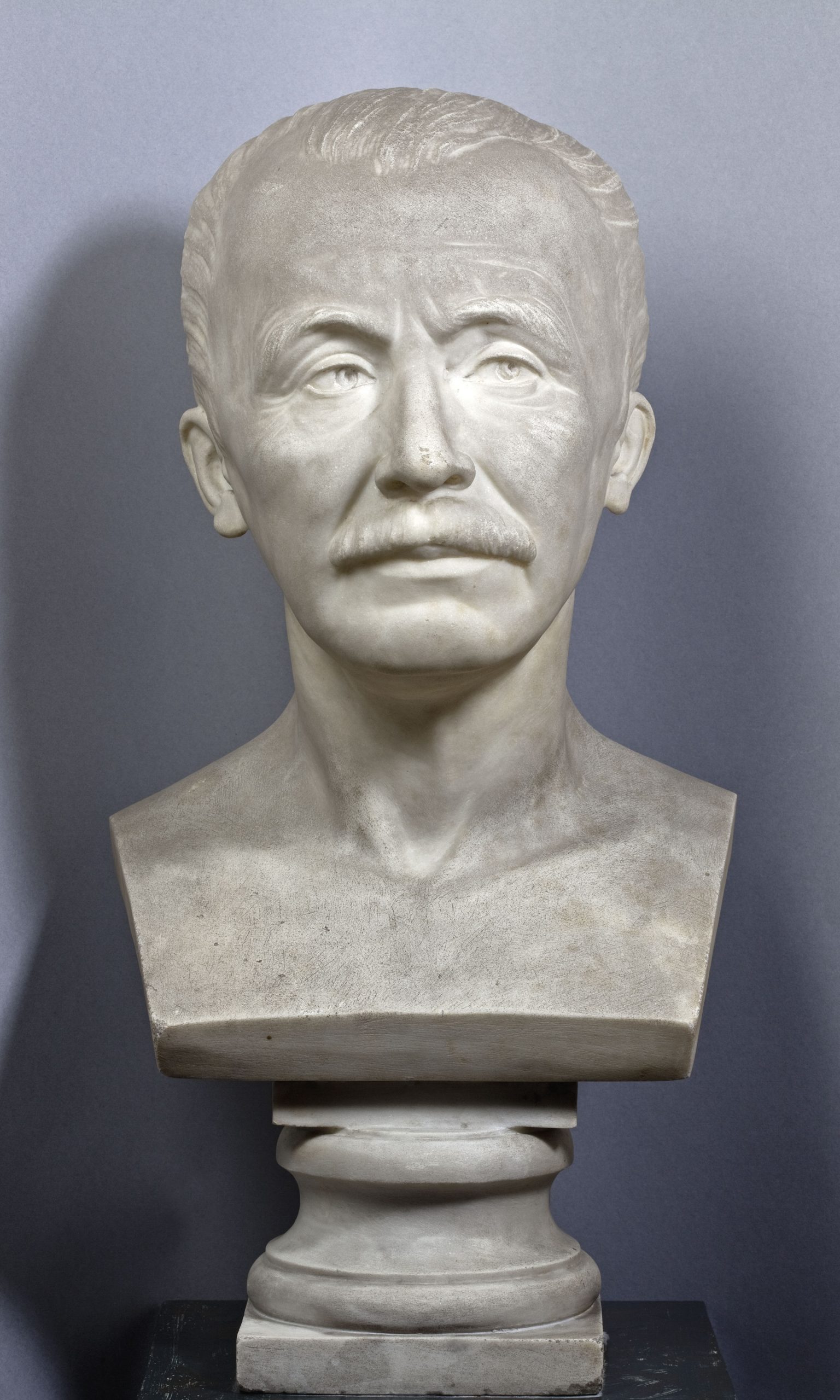
NOTE: The archival documents of the DAI Athens have been digitized by the project ARCHAthen and soon will be available online.
Works cited and further reading:
ASCSA – American School of Classical Studies at Athens, Heinrich Schliemann Papers
https://www.ascsa.edu.gr/index.php/archives/heinrich-schliemann-finding-aid/#Series_B:_Correspondence
Kennell 2008
A. H. Kennell, Dörpfeld and Schliemann – New Lights on the Early Years of their Collaboration (1879 – 1885) in: Papadatou-Giannopoulou, Ch. (ed.), Διεθνές Συνέδριο Αφιερωμένο στον Wilhelm Dörpfeld: υπό την Αιγίδα του Υπουργείου Πολιτισμού, Λευκάδα 6–11 Αυγούστου 2006: Πρακτικά συνεδρίου (Patras 2008) 43–60
Kennell 2010
S. A. H. Kennell, “…daß es keinen so gelehrten und tüchtigen Mann gibt als Sie“. The Heinrich Schliemann Wilhelm Dörpfeld Correspondence, 1879–1890, AM 125, 2010, 257–308
Meyer 1936
E. Meyer (ed.), Briefe von Heinrich Schliemann, gesammelt und mit einer Einleitung in Auswahl herausgegeben von Ernst Meyer (Berlin 1936)
Schliemann 1878
H. Schliemann, Mykenae – Bericht über meine Forschungen und Entdeckungen in Mykene und Tiryns (Leipzig 1878)
Sporn 2018
K. Sporn (ed.) in cooperation with T. Bilis, Das Deutsche Archäologische Institut Athen – Architektur und Geschichte (Athens 2018) https://publications.dainst.org/books/dai/catalog/book/75
